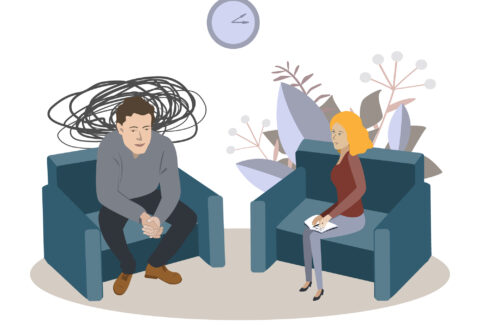The Transformative Power of Gestalt Techniques
Introduction:
Gestalt therapy, with its emphasis on holistic awareness and experiential exploration, offers a diverse array of techniques designed to facilitate personal growth, self-discovery, and transformation. From the empty chair dialogue to the two-chair technique and the exaggeration exercise, Gestalt techniques invite individuals to engage with their thoughts, emotions, and behaviors in a creative and dynamic manner.[1] In this article, we delve into the transformative power of Gestalt techniques, exploring their application in therapeutic practice and their potential to catalyze profound change.
The Empty Chair Dialogue:
One of the hallmark techniques of Gestalt therapy, the empty chair dialogue, invites individuals to engage in an internal dialogue with different aspects of themselves, significant others, or unresolved issues from their past. By physically embodying these different perspectives through role-playing and dialogue, individuals gain insight into their inner conflicts, unresolved emotions, and unmet needs. Through this process of externalizing and confronting internalized experiences, individuals are empowered to gain clarity, resolve inner conflicts, and integrate fragmented aspects of their self.[2]
The Two-Chair Technique:
Another powerful Gestalt technique, the two-chair technique, facilitates the exploration of conflicting feelings or inner dialogue by physically embodying these opposing aspects in two separate chairs.[3] Individuals move between the chairs, expressing their thoughts, emotions, and perspectives from each vantage point. This technique allows individuals to gain greater awareness of their internal conflicts, ambivalence, and competing desires, ultimately fostering integration and resolution. By embodying and honoring the complexity of their experience, individuals are empowered to reconcile inner conflicts and move towards greater wholeness.
Exaggeration and Role Reversal:
Gestalt therapy often employs techniques such as exaggeration and role reversal to illuminate unconscious patterns, entrenched behaviors, and limiting beliefs. Through exaggeration, individuals are encouraged to amplify their gestures, expressions, or verbalizations to bring attention to underlying emotions or patterns of behavior.[4] Role reversal invites individuals to step into the shoes of another person or aspect of themselves, gaining fresh perspective and empathy.[5] These techniques disrupt habitual ways of thinking and behaving, opening the door to new insights, possibilities, and ways of being.
The Awareness Continuum:
At the heart of Gestalt therapy lies the cultivation of awareness, both in the therapeutic process and in daily life. Gestalt therapists employ techniques such as the awareness continuum to facilitate mindfulness, presence, and self-reflection. Individuals are guided to explore their internal experiences along a continuum, ranging from heightened awareness to dissociation or avoidance. By gently guiding individuals towards greater awareness of their thoughts, feelings, and bodily sensations, therapists empower them to engage more fully with their inner world and the present moment.[6]
Conclusion:
As we explore the transformative power of Gestalt techniques, we are reminded of their capacity to unlock the doors of perception, insight, and growth. From the empty chair dialogue to the two-chair technique, exaggeration, and role reversal, Gestalt techniques offer a rich tapestry of experiential tools for self-discovery and transformation. By engaging creatively with their inner landscape and confronting unconscious patterns, individuals are empowered to reclaim their agency, integrate fragmented aspects of their self, and move towards greater authenticity and wholeness. In the hands of skilled Gestalt therapists, these techniques serve as catalysts for profound change, inviting individuals to embrace the fullness of their being and embark on a journey of self-discovery and empowerment.
[1] Mann, Dave. Gestalt therapy: 100 key points and techniques. Routledge, 2020.
[2] Kolmannskog, Vikram. The empty chair: Tales from gestalt therapy. Routledge, 2018.
[3] Stiegler, Jan Reidar, Helge Molde, and Elisabeth Schanche. “Does the two-chair dialogue intervention facilitate processing of emotions more efficiently than basic Rogerian conditions?.” European Journal of Psychotherapy & Counselling 20.3 (2018): 337-355.
[4] Polster, Miriam. “Therapy without resistance: Gestalt therapy.” From the Radical Center. Gestalt Press, 2013. 118-142.
[5] Abirami, P. Effectiveness of Gestalt Group Therapy on Psychological Well Being among Alcohol Dependence Syndrome Patients admitted in Selected De-Addiction Centers, at Tirunelveli District. Diss. Sri K Ramachandran Naidu College of Nursing, Thirunelveli, 2019.
[6] Dreitzel, H. Peter. Human interaction and emotional awareness in gestalt therapy: Exploring the phenomenology of contacting and feeling. Routledge, 2021.







